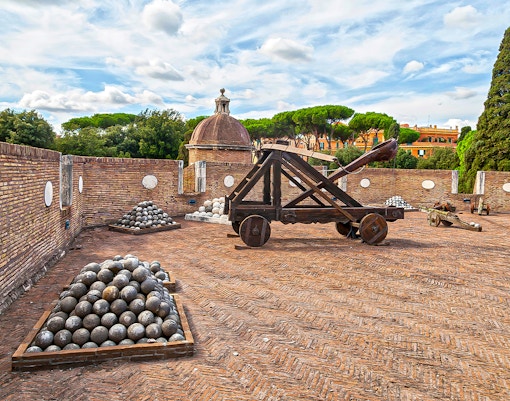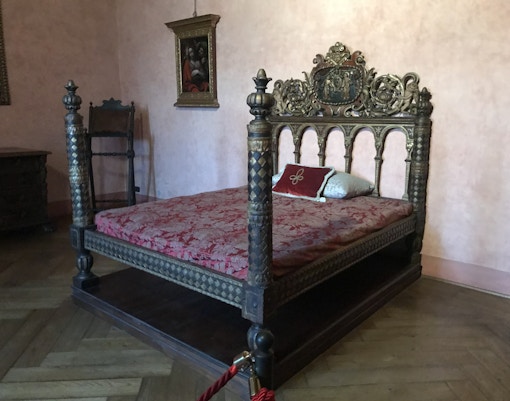- Castel Sant'Angelo
- Passetto di Borgo
- Mausoleum of Hadrian
- Ponte Sant’Angelo
- Archangel Michael Statue
- History
- Inside
- Colosseum
- Vatican Museums
- St. Peter's Basilica
- Rome Pantheon
- Musei Capitolini
- Borghese Gallery
- Roman Catacombs Tour
- Altare della Patria
- Doria Pamphilj Gallery
- Bioparco Rome
- Big Bus Rome Hop-on Hop-off Tours
- Palazzo Barberini
- Leonardo da Vinci Museum
- Trevi Fountain Tours
- Rome Underground Tours
- Rome To Tuscany Tours
Inside Castel Sant'Angelo: Unravel Mysteries and Masterpieces
Browse through the castle walls: A visual journey
Highlights of Castel Sant'Angelo
Book Castel Sant'Angelo tickets
Frequently asked questions about what's inside Castel Sant'Angelo
Visiting the Castel Sant’Angelo is definitely worth it and not only because of the exterior beauty of the monument but also because of what it has to offer inside. When you enter inside Castel Sant’Angelo you will get an idea of how Rome has changed over a period of 2000 years.
Castel Sant’Angelo is a six storey building which is 10.2 meters high, and it has 58 rooms in total.
Some highlights inside the Castel Sant’Angelo in Rome include the Mausoleum of Hadrian, the Bastions, the Papal Quarters, and the Castel Sant'Angelo terrace.
Climbing the spiral staircase inside the Castel Sant’Angelo is one of the unique things that you will do here. As you make your way to the top, you will come across a cafe bar where you can grab a drink and enjoy the vistas of Rome.
Yes, you need to get tickets to go inside Castel Sant’Angelo, it is recommended that you buy the tickets online to avoid the never-ending queue.
You can take an expert guided tour inside the Castel Sant’Angelo. You could also take an audio-guided tour which will help you to explore the place at your own pace.
By booking fast-track tickets to the museum, you can escape the hurdle of standing in a long queue at the physical ticket booking counter.
The opening hours within which you can enter inside Castel Sant’Angelo is from 9 AM to 7.30 PM.
Yes, you are free to click pictures inside the castle.













